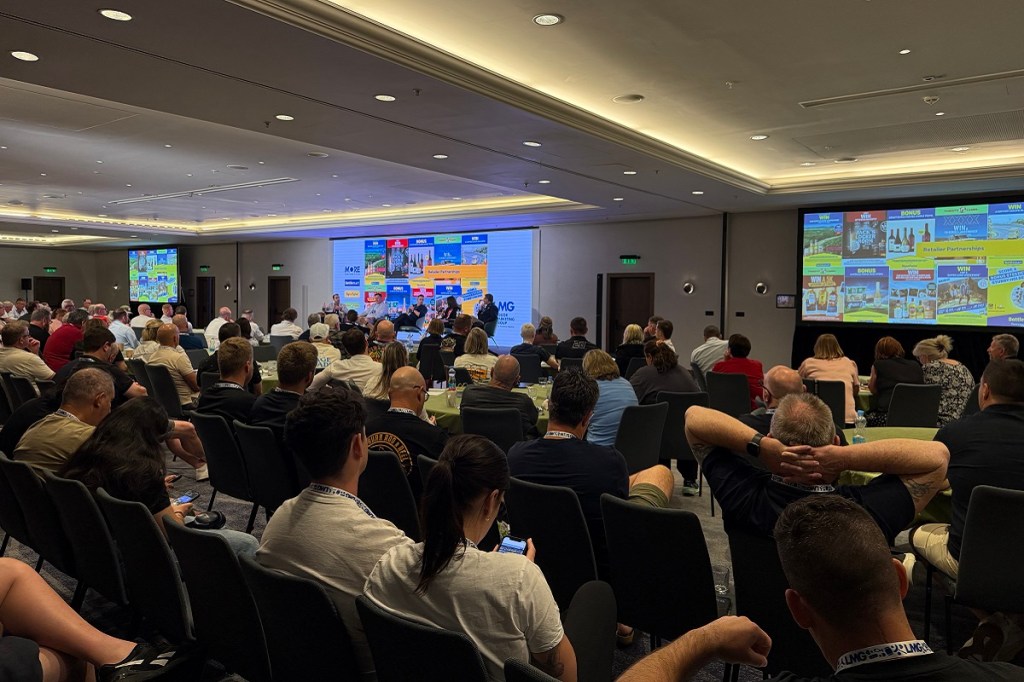By Paul Wootton
Speaking during the Liquor Marketing Group (LMG) conference’s business sessions, Brad Madigan, VP Managing Director ANZ at Brown-Forman, said cost-of-living pressures are shaping shopper behaviour, along with consumer demand for innovation, not just in terms of new products but also packaging and formats.
Smaller pack sizes, such as 250ml cans, are giving consumers affordable choices without losing the “treat” occasion. He noted that younger consumers, in particular, churn through brands and formats more quickly than ever.
“We’ve got a responsibility to try new things,” he said. “We’re not always going to be right. So, you’re going to see a bit more of things coming in and coming out. They might have a two-year life cycle, as the younger generations move through drinks faster than ever before. What they’re drinking this year, they might have moved on from next year.”
That pace of change means not every new product needs to be a 20-year play. Some can succeed quickly and then disappear, while still adding value in the short term.
Kerry Appathurai, Sales Director at Lion, agreed that newness, as well as the rejuvenation of traditional brands, is critical to keeping shoppers engaged.
“If it’s about recruitment, we need to keep people excited. We need to understand what the next trend is, get ahead of it, and execute well. That’s the hardest part, but we’re getting better at it.”
She pointed to the resurgence of Guinness, which is up 70 per cent MAT, and the strength of mid-strength beer.
“Australia is now the biggest market for mid-strength in the world,” she said.
Madigan emphasised that consumer trends played out differently in different categories. Categories including beer and wine are being shaped by consumer behaviour aligned to moderation, wellbeing and zero sugar. But in spirits, “eight to nine per cent ABV dark RTDs are among the fastest-growing segments,” he explained.
Ty Menzies, Executive Director – Sales ANZ at Samuel Smith & Son, said wine faces unique challenges.
“We don’t have the good fortune of being able to bring new innovations to market at the speed of the other categories. There’s a big risk in wine, so we’re working hard to better understand which brand vehicles we can use to drive innovation with relevance,” he said.
For wine, that means a focus on lifestyle positioning, adding sparkling wines to ranges that are already successful, and exclusive launches into the independent sector such as Y Series Prosecco.
“It’s about small steps,” he said. “So lighter, fresher styles, promoting chilled reds, and sparkling extensions. We want innovation that shifts perceptions, and marketing that goes beyond just varietals and food matching.”
Recruitment as a “leaky bucket”
Madigan described recruitment as a constant process.
“There are two ways to grow a brand: get more people drinking it or get the people you’ve got drinking more. Recruitment is a leaky bucket. You always have to keep filling it.”
Traditionally trial came through the on-premise, but off-premise and digital now dominate. Execution in-store, staff education and online visibility are all critical.

Being brave on shelf space
All three speakers emphasised the need for range optimisation. Appathurai urged retailers and suppliers to “be brave” about rationalisation.
“There are still some stores, where I still see bays on bays on bays of different beers, probably more from the craft portfolio, where we need to ask how much of this is actually selling. We need to be brave and decide what craft products we don’t need anymore, and how we allocate the space to the right categories.”
She added: “The challenge is balancing the big brands consumers love and trust today with the ones of tomorrow. It’s about defining the core that delivers results and ensuring a continuous flow of innovation to excite shoppers.”
The road ahead
Despite the differences between beer, wine and spirits, the consensus was clear: the industry must stay nimble, balance core with innovation, and never stop recruiting new shoppers.
“The market is moving fast, and the best operators are moving fast with it,” Madigan said. “If we can innovate, recruit, and be brave about the choices we make, there’s enormous opportunity ahead.”

